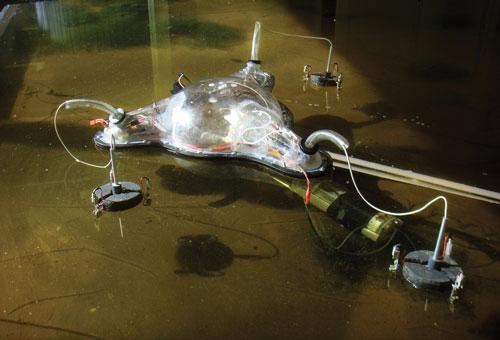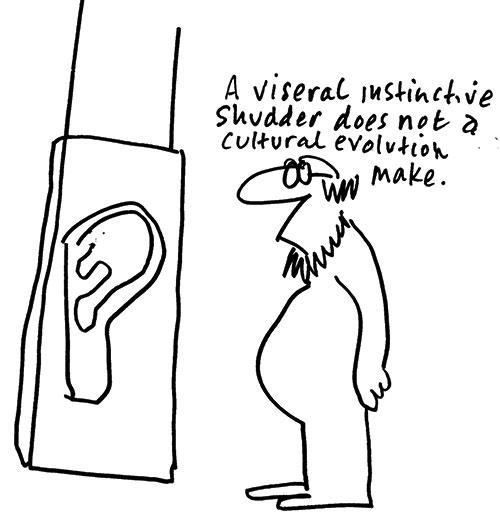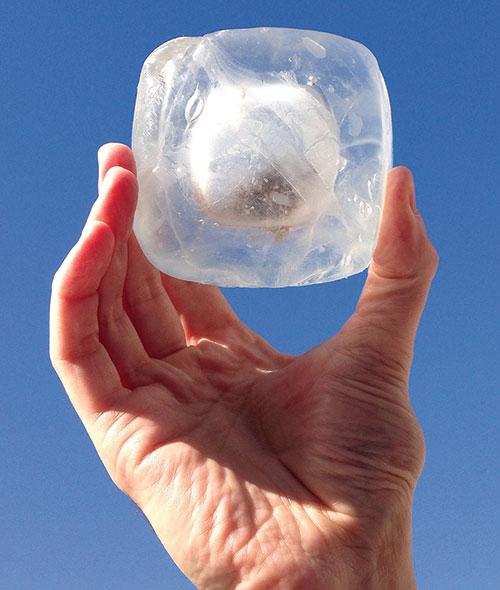.jpg)
In Germany, the Berlin Biennale is second only to dOCUMENTA in size and cultural importance, but true to the capital's “poor-but-sexy” image, it has always existed on a fraction of dOCUMENTA’s budget. Despite this limitation, 52 artists were invited to participate in Berlin Biennale 8, the majority producing commissioned work specifically for the event. Conceptually, the Berlin Biennale carries no requirement to pursue a prescribed theme, and curators are constrained only by the exhibition’s time frame (84 days) and the expectation that the event will respond to some aspect of the city.
This time the curatorial challenge was assigned to Juan A. Gaitán a Berlin-based Canadian-Colombian who previously established himself on the international art scene as the curator of the Witte de With Center for Contemporary Art in Rotterdam. Additional to these formal specifications, Gaitán and his curatorial team of Tarek Atoui, Natasha Ginwala, Catalina Lozano, Mariana Munguía, Olaf Nicolai and Danh Vo also faced the unspoken challenge of avoiding a repeat of the disaster that was Artur Zmijewski’s Biennale 7, which was ruthlessly panned by the art press and mainstream media alike.
The consensus was that Zmijewski and his team presented an exhibition far too literal in its response to an overtly political theme, resulting in a tangled presentation of contemporary art and DIY/protest culture that dealt adequately with neither. It was clear that Gaitán was intent on dramatically shifting the focus of this installment, declaring in his curatorial statement that “political expediency is not art’s purpose; art aims to generate a counter-image that is able to distinguish truth from power.”
Gaitán outlined his conceptual structure for this installment in the Biennale’s mission statement: “The research for the 8th Berlin Biennale was structured along three speculative approaches toward the city of Berlin: its relationship to the built environment, its relationship to citizenship, and its relationship to labor. Another focus lies on ways in which 18th and 19th-century Berlin is contemplated within our current cultural landscape.”
.png)
For this reason, Gaitán allowed works to generate their own politics and shifted his curatorial focus to considerations arising from the socio-political context surrounding the cultural institutions these works were displayed within. The decision to utilise Berlin’s preexisting cultural institutions, and specifically the Museen Dahlem as the Biennale’s main exhibition site, meant a break with the curatorial tradition of sourcing a disused or derelict building for this purpose, as Gaitán believes that such industrial spaces “no longer reflected the reality of the city’.
The Museen Dahlem was chosen specifically to draw public attention to the impending transferral of its collection to the Humbolt-Forum in the centre of the city particularly in light of the decision to have the Forum executed in a 19th-century Prussian architectural style in order to cohere with the more traditional buildings in the area. The Haus Am Waldsee, a two storey villa in Zehlendorf, provided a small and picturesque venue complete with a private canal in close proximity to the Museen. The KW Institute in Mitte, known since the early 1990s as one of the most significant contemporary art institutions in Berlin, was the historic hub of previous Berlin Biennales. Despite Gaitán’s decision to break with this tradition, the KW Institute housed works from 19 artists over four floors.
The 52 artists of Berlin Biennale 8 were of an exceptionally high quality and the strong representation of both young and women artists was both noted and welcome. Artists from 20 countries were represented. Many works were of small scale and there was an obvious move away from an over-reliance on projection art or background-text heavy conceptual pieces. Of special note were the mixed-media sculptural installation of Leonor Antunes, the small printed books of text and images by Mariam Suhail, the mixed media installation by Tacita Dean, videos by Shahryar Nashat, the poetry installation of Saadane Afif, and the carved plaster copies of ancient Meso-American artifacts by Mariana Castillo Deball.
There was sadness in seeing the 30 Notepad Drawings from the early 1990s by Gordon Bennett, who died in Australia just five days after the Biennale opened. This series of sketches, scattered amongst the ethnological collections at the Museen Dahlem, rendered in the colours of the Indigenous flag and depicting instances of casual racism and institutionalised violence within white Australian culture, retain the conviction that materialised them 20 odd years ago.
Other artists exhibited works that responded to the construct of the cultural institution more immediately, the most notable being Canadian artist Judy Radul’s Look. Look Away. Look Back (2014). In this installation, the artist utilised the display cabinets of the South Seas collection in the Museen Dahlem, displaying a sparse collection of seemingly random objects. The cases were constantly monitored by cameras projecting their footage onto screens located within the KW Institute. KW also filmed footage of viewers experiencing the work, which was simultaneously displayed on screens within the Museen site.
Looking at the screens and the combination of interchangeable sites and the visitors navigating them left the viewer confused. Such disorientation mimics the anthropological mish-mash that has historically characterised Wunderkammer installations of ethnographic objects by Western cultural institutions. Olaf Nicolai’s Szondi/Eden (2014) sourced content from other sites around Berlin such as four street lights from a Lichtenberg shopping mall currently awaiting demolition. These lights were installed complete with the exact tile patterning of the mall within the foyer of the Museen Dahlem, highlighting the city’s tentative yet rapidly developing relationship with consumerism and gentrification.
It is rare to see a Biennale that showcases such an impressive list of works without providing a strong curatorial vision to affirm its impressive selection. The weakness of this relationship left Berlin Biennale 8 in a strange position – although the diverse works on display were gripping and the artists’ interests topical, it seemed that the “why” of this year’s Biennale had not been answered. But due to the strength of the art and the venues selected, to dismiss Berlin Biennale 8 as having no curatorial concept (as some critics did) would be rash. Rather, Gaitán and his curatorial team made the error of being too ambitious, rather than visionless.












